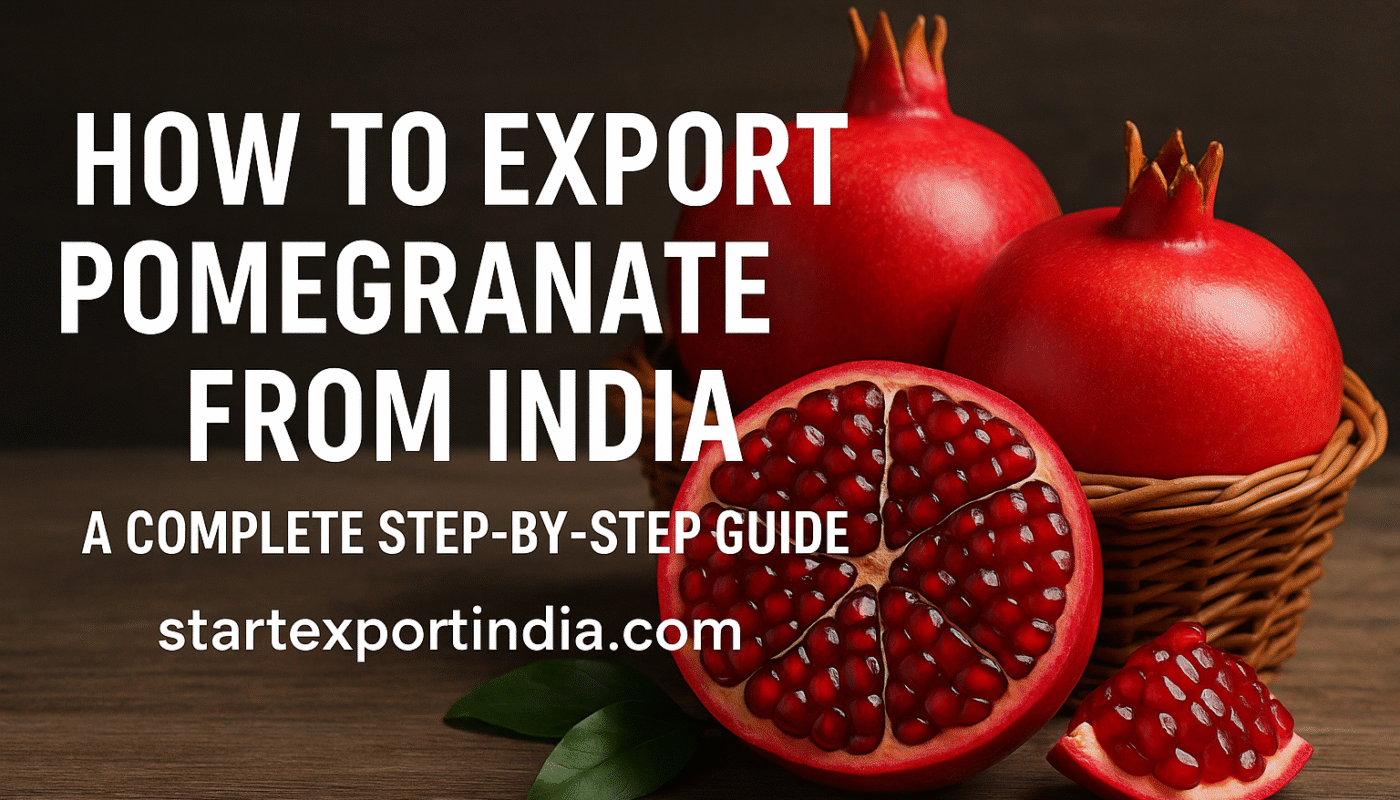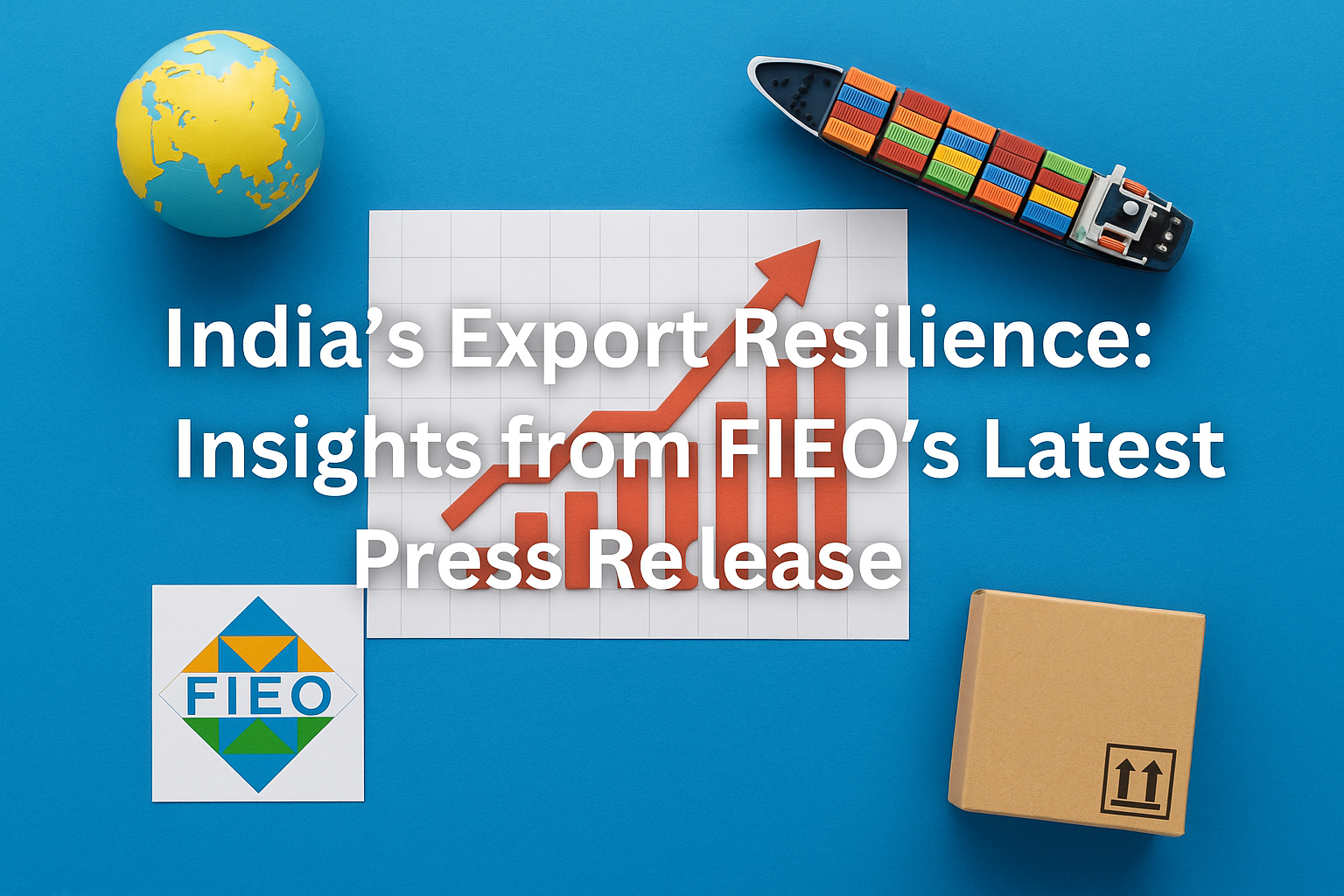- Introduction to Pomegranate Export from India
- Why Export Pomegranates from India?
- Global Demand for Indian Pomegranates
- Varieties of Pomegranates Grown in India
- Export Eligibility and Quality Standards
- Step 1 – Get Your Business Registered
- Step 2 – APEDA Registration
- Step 3 – Select the Right Pomegranate Variety for Export
- Step 4 – Ensure Quality Control and Grading
- Step 5 – Choose Packaging and Labeling Requirements
- Step 6 – Identify Target Markets and Buyers
- Step 7 – Logistics and Cold Chain Management
- Step 8 – Documentation and Compliance
- Step 9 – Partner with Freight Forwarders & CHA
- Step 10 – Get Paid Safely: Payment Terms & Insurance
- Challenges in Pomegranate Export and How to Overcome Them
- Tips for First-Time Exporters of Pomegranates
- FAQs on How to Export Pomegranate from India
- Conclusion – Grow Your Agro-Export Business Successfully
Exporting fresh produce like pomegranates from India has grown into a lucrative business, especially with rising global demand for high-quality, naturally cultivated fruits. India, being one of the largest producers of pomegranates, offers immense export potential—if you know the right steps.
Whether you’re a farmer looking to expand your income or an entrepreneur wanting to tap into agri-export, this comprehensive guide on how to export pomegranate from India will walk you through everything—from legalities and logistics to market opportunities.
Introduction to Pomegranate Export from India
India is among the top pomegranate-producing countries in the world, with states like Maharashtra, Gujarat, Karnataka, and Andhra Pradesh being major contributors. The fruit is widely valued for its taste, health benefits, and long shelf-life.
With increasing health consciousness worldwide, demand for pomegranates, especially the “Bhagwa” variety, has soared across countries in the Middle East, Europe, and Southeast Asia.
Why Export Pomegranates from India?
Here’s why India is a hotbed for pomegranate export:
- High-Quality Varieties: Indian pomegranates have deep red arils, thick skin, and long shelf life.
- Export-Friendly Climate: Indian climate favors year-round cultivation.
- Established Infrastructure: India has cold chain logistics, APEDA support, and export subsidies.
- Global Market Access: Agreements with GCC, EU, and ASEAN countries make export smoother.
Global Demand for Indian Pomegranates
Countries like the UAE, Saudi Arabia, Netherlands, Bangladesh, UK, Russia, and Germany consistently import pomegranates from India due to their unmatched quality. The rising awareness about antioxidants and immunity-boosting fruits has expanded market size even further.
Varieties of Pomegranates Grown in India
India cultivates several varieties suited for export. These include:
- Bhagwa – The most popular variety for export; deep red, soft seeds, long shelf life.
- Ganesh – Pinkish skin, soft seeds, commonly consumed domestically.
- Ruby – Bright red and medium-sized, ideal for Middle Eastern markets.
- Arakta – Attractive color and sweetness, suited for fresh consumption.
Each market has preferences, so exporters need to align the variety with the target destination.
Export Eligibility and Quality Standards
Before you start exporting, ensure compliance with:
- APEDA (Agricultural and Processed Food Products Export Development Authority) Guidelines
- EU MRL (Maximum Residue Limits) for pesticides
- Phytosanitary certificates ensuring no pests or diseases
- FSSAI clearance for food safety standards
Following these ensures your produce isn’t rejected at the port of entry.
Step 1 – Get Your Business Registered
To begin exports:
- Register your business (Proprietorship, Partnership, LLP, or Pvt. Ltd.).
- Obtain an IEC (Import Export Code) from the DGFT, mandatory for all exporters.
- Register for GST, as exports fall under zero-rated supply but require documentation.
Step 2 – APEDA Registration
APEDA registration is a must for agricultural exporters. Steps include:
- Visit APEDA
- Fill in required forms and upload documents (IEC, bank certificate, PAN)
- Pay registration fee (approx. ₹5,000)
- Receive RCMC (Registration-cum-Membership Certificate)
This certificate enables participation in export subsidies and international trade fairs.
Step 3 – Select the Right Pomegranate Variety for Export
Target market preferences matter:
| Market | Preferred Variety | Reason |
|---|---|---|
| UAE/Saudi | Bhagwa | Shelf life & size |
| EU Nations | Ruby/Bhagwa | Deep red arils |
| Bangladesh/Nepal | Ganesh | Cost-effective |
Consult buyers or conduct a trial shipment to test market response.
Step 4 – Ensure Quality Control and Grading
Quality determines price and acceptance:
- Sort and grade fruits based on size, color, weight
- Avoid blemishes, cracks, and immature fruits
- Use GAP (Good Agricultural Practices) certification to add credibility
- Hire professionals or certified agencies for grading if needed
Step 5 – Choose Packaging and Labeling Requirements
Ideal packaging enhances shelf life and appeal:
- Use corrugated fiberboard boxes
- Include ventilation holes
- Use food-grade liners
- Label with:
- Product name
- Variety
- Grade
- Net weight
- Country of origin (India)
- Handling instructions
Eco-friendly packaging options are gaining popularity in Europe.
Step 6 – Identify Target Markets and Buyers
- Use B2B platforms like Alibaba, TradeIndia, ExportHub
- Attend international trade expos
- Join export councils and chambers of commerce
- Conduct digital marketing campaigns targeting wholesalers/importers
Step 7 – Logistics and Cold Chain Management
Fresh produce requires precision in shipping:
- Cold chain logistics are vital—pomegranates should be stored at 5°C.
- Use reefer containers for shipping
- Choose air freight for urgent deliveries or sea freight for bulk
Timely coordination with logistics partners reduces spoilage.
Step 8 – Documentation and Compliance
Important documents include:
- Commercial Invoice
- Packing List
- Phytosanitary Certificate
- Certificate of Origin
- Bill of Lading
- FSSAI certificate
- Insurance Certificate
Keep digital and physical copies for customs clearance.
Step 9 – Partner with Freight Forwarders & CHA
Hire a Customs House Agent (CHA) for:
- Port clearance
- Customs formalities
- Freight coordination
A good CHA ensures smoother operations, especially for first-time exporters.
Step 10 – Get Paid Safely: Payment Terms & Insurance
Protect yourself with:
- Letter of Credit (LC) – Secure but needs banking expertise
- Advance Payments – For trusted buyers
- Export Credit Insurance from ECGC – Covers defaults and risks
Always verify buyer credibility and trade history.
Challenges in Pomegranate Export and How to Overcome Them
| Challenge | Solution |
|---|---|
| High perishability | Use cold chain logistics |
| Export rejections | Follow strict APEDA and EU MRL guidelines |
| Price fluctuations | Enter forward contracts |
| Finding reliable buyers | Use verified B2B platforms and trade fairs |
Tips for First-Time Exporters of Pomegranates
- Visit APEDA training programs
- Start with small trial consignments
- Join WhatsApp groups of agri-exporters
- Network with farmers, suppliers, and freight forwarders
FAQs on How to Export Pomegranate from India
Q1. Is APEDA registration mandatory for pomegranate export?
Yes, it’s essential for agri-products including pomegranate.
Q2. What is the best season to export pomegranate from India?
Peak season: February to May and August to November.
Q3. How long does it take to export pomegranates from India to the Middle East?
Usually 5–7 days via sea freight; faster by air.
Q4. Which Indian states are the top producers of export-quality pomegranates?
Maharashtra, Karnataka, and Gujarat.
Q5. What is the minimum quantity required for export?
No fixed minimum, but usually exporters start with 1 MT (metric ton).
Q6. Can individual farmers export directly?
Yes, with proper registration, IEC code, and support from APEDA.
Conclusion – Grow Your Agro-Export Business Successfully
Exporting pomegranates from India is not just about growing and packing—it’s about aligning quality with global expectations. With strategic planning, compliance, and marketing, you can turn a humble fruit into a profitable global venture.
India has the resources, the produce, and now—you have the knowledge.



